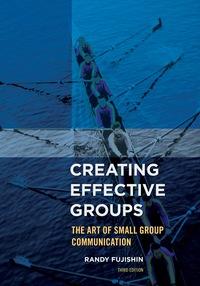4.2 With a different friend, try listening for understanding (active listening) during a conversation for four or
Question:
4.2 With a different friend, try listening for understanding (active listening)
during a conversation for four or fi ve minutes. Don’t tell your friend about your experiment. Simply slip into an active-listening style of communicating without verbally noting the change. Carry on your part of the conversation.
If he asks you a question, reply. But the primary purpose of the experiment is for you to listen in a way that provides you with a greater understanding of what your friend thinks and feels. Use questions or statements that begin with “You’re saying . . . ,” “You’re feeling . . . ,” “What I hear you saying is . . . ,” “You feel that
. . . ?” “Sounds like you . . . ,” and so on. Use some variety in your listening for understanding. And don’t refl ect every statement your friend makes.
Try active listening once or twice every minute—that’s enough. The rest of the time, carry your end of the conversation. See if you can listen for understanding for four or fi ve minutes without letting on that you’re experimenting. After the conversation is over, feel free to share with your friend that you were experimenting with a new way of listening, a method that would improve your understanding.
Did your friend notice your listening response style? What did he say or do that indicated he noticed your change in listening? How did listening for understanding affect or modify the content of the discussion? How did listening for understanding affect or modify the way your friend communicated with you? How did it feel to you?
What did you discover about yourself as you attempted to listen for understanding?
Step by Step Answer:

Creating Effective Groups The Art Of Small Group Communication
ISBN: 9781442222496
3rd Edition
Authors: Randy Fujishin






